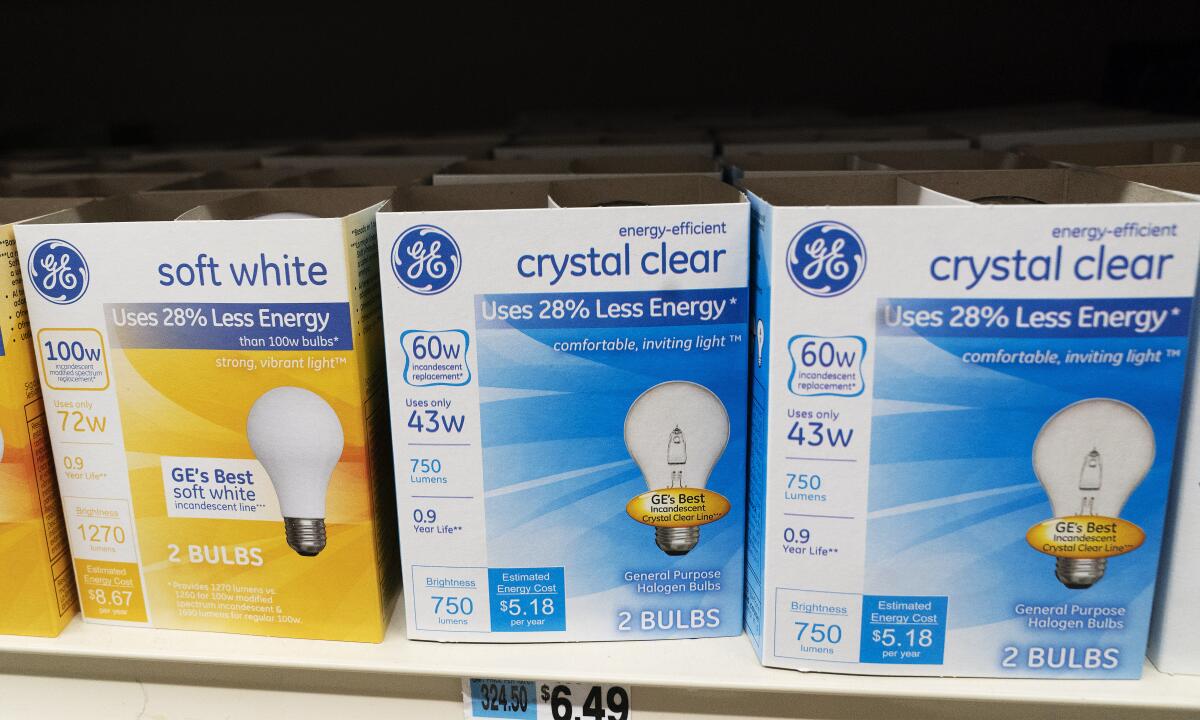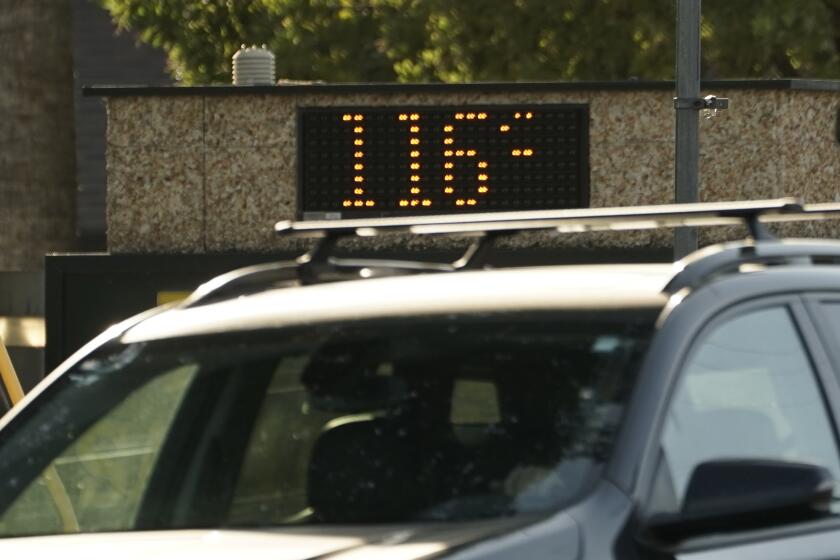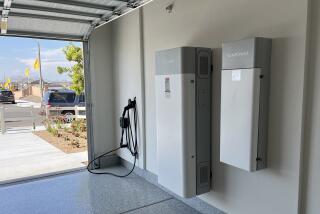It’s lights out for incandescent bulbs. Did anyone even notice?

- Share via
It wasn’t too long ago that the federal plan to phase out inefficient incandescent lights, technology patented more than 140 years ago by Thomas Edison, was controversial enough to generate fierce political backlash and the frenzied stockpiling of bulbs.
In 2011, Republican lawmakers rallied to block federal light bulb efficiency standards, calling them an assault on personal freedom. Former President Trump tried to roll back similar requirements in 2017. But sanity prevailed, and as of this month Americans can no longer purchase incandescent bulbs, with some exceptions, under new U.S. energy efficiency standards.
Did anyone notice? The end of the era of bulbs lighted by hot and inefficient filaments couldn’t have been more uneventful. Instead of generating a final outcry, it was met with a virtual shrug.
House Republicans, and some Democrats, are using their power to pass legislation that would preempt nonexistent bans on gas stoves. It’s really just a bad-faith attempt at anti-climate virtue-signaling.
This is likely due to the fact that Americans had already mostly transitioned to LED lights, which use up to 90% less energy and last more than 25 times longer. Incandescent bulbs were taken off the shelves in California in 2018. By 2020 only about 15% of U.S. households still used incandescent bulbs for most of their indoor lighting, according to the U.S. Energy Information Administration.
The muted reaction suggests that we have nothing to fear by phasing out other outdated and wasteful technology to fight climate change. To slash carbon emissions, we need to quickly replace fossil fuel-burning appliances, such as heaters and stoves, and vehicles with cleaner versions that don’t overheat the planet and pollute the air we breathe.
Those phaseouts have already begun. And with any luck, they will be just as anticlimactic when completed as the end of the incandescent bulb.
An Arizona congressman has proposed fixing that. It makes sense considering how destructive, and increasingly common, high temperatures have become.
The forced switch to LEDs is just one example of how consumers and businesses can save billions of dollars in energy costs each year as a result of typically uncontroversial federal energy efficient standards imposed on almost every conceivable type of appliance.
Yet some Republicans have nonetheless seized on the incandescent bulb ban as some kind of tyrannical move by President Biden. “Another bright idea from the Biden Admin,” Republican Sen. James Lankford of Oklahoma said on Twitter, while the Republican Party of New Mexico wrote that “the Biden administration’s government overreach continues.”
Biden adopted the rules that put the final nail in the coffin for incandescent bulbs, but he didn’t initiate their gradual, years-long demise. For that you can thank President George W. Bush for signing overwhelmingly bipartisan legislation in 2007.
The performative outrage by GOP lawmakers over environmental protection policies is now routine; House Republican members recently introduced legislation to stop a nonexistent ban on gas stoves. Nonsensical fearmongering is common too, such as President Trump’s bizarre claims in 2019 that Americans were getting only drips out of their low-flow faucets and showerheads and had to flush their toilets “10 times, 15 times, as opposed to once.”
Despite the irresponsible rhetoric from some elected leaders, superior energy-efficient technology for cars, appliances and other devices that don’t depend on fossil fuels will help curb pollution in homes and communities and slow down the climate change that’s turning our planet into a hot, smoky hellscape.
It’s becoming clearer to some environmental leaders that fossil fuel companies have no real plans to change in response to the climate crisis. The only way forward is without them.
We’re already on our way. More than 50% of new homes are now built with energy-efficient, electric heat pumps instead of polluting gas furnaces. And electric cars are surging in popularity, with zero-emission vehicles now accounting for 1 in 4 new car sales in California. By the time state regulations phase out the sale of new gas-powered cars in 2035, perhaps they will seem just as obsolete as incandescent bulbs are today.
Dumping incandescent bulbs for better alternatives is a small but important part of transforming how we consume energy on a warming planet. Completing it with so little public consciousness is a hopeful sign that by the time we reach other energy milestones, they too may seem just as unremarkable.
More to Read
A cure for the common opinion
Get thought-provoking perspectives with our weekly newsletter.
You may occasionally receive promotional content from the Los Angeles Times.












